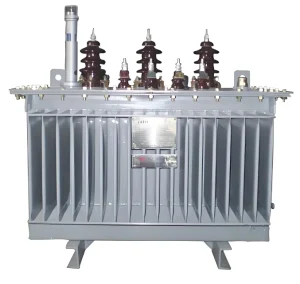
Introduction
Overview of Transformers in Power Systems
Transformers are critical in power systems, enabling the efficient transmission and distribution of electrical energy. They adjust voltage levels to move electricity over long distances and ensure safe delivery to various end-users.
Introduction to Amorphous Metal Transformers (AMTs)
Amorphous metal transformers (AMTs) are an advanced type of transformer that uses a unique core material made of metallic glass. This material features a disordered atomic structure, leading to significantly lower core losses compared to traditional silicon steel transformers. AMTs are becoming increasingly popular due to their superior efficiency and environmental benefits.
Advantages of Amorphous Metal Transformer
Enhanced Efficiency
Amorphous metal transformers offer enhanced efficiency. Their unique core material reduces energy losses, allowing for more efficient electricity transmission and distribution.
Reduced Energy Losses
AMTs significantly reduce energy losses, including both hysteresis and eddy current losses. This reduction results in better overall performance, especially at high frequencies.
Compact and Lightweight Design
Due to their higher power density, AMTs are more compact and lightweight than traditional transformers. This compact design simplifies installation and reduces space requirements.
Improved Thermal Performance
The improved thermal performance of AMTs is another key benefit. They dissipate heat more effectively and exhibit enhanced thermal stability, which prolongs the life of the transformer and improves reliability.
Environmental Benefits
By lowering energy consumption and reducing carbon footprints, AMTs offer significant environmental benefits. Their increased efficiency helps reduce greenhouse gas emissions, contributing to a more sustainable energy infrastructure.
Applications of Amorphous Metal Transformer
Power Distribution Networks
AMTs are increasingly used in power distribution networks due to their efficiency and reliability. They help improve the overall performance of the grid and reduce energy losses.
Renewable Energy Systems
In renewable energy systems, such as wind and solar power, AMTs play a crucial role. Their efficiency and compact design make them ideal for integration into these systems, enhancing their overall performance.
Industrial Applications
In industrial settings, AMTs are used to optimize energy usage and improve the efficiency of electrical equipment. Their superior performance characteristics make them a preferred choice in demanding industrial environments.
Challenges and Future Prospects
Initial Cost Considerations
While AMTs offer numerous benefits, their initial cost is higher compared to traditional transformers. However, the long-term savings in energy costs and maintenance can offset this initial investment.
Technological Developments
Ongoing technological developments are expected to further enhance the performance and reduce the cost of AMTs. Advances in manufacturing processes and materials science will play a key role in this evolution.
Future Outlook
The future outlook for AMTs is positive, with increasing adoption expected across various sectors. Their role in improving energy efficiency and supporting sustainable energy practices will drive their growth in the coming years.